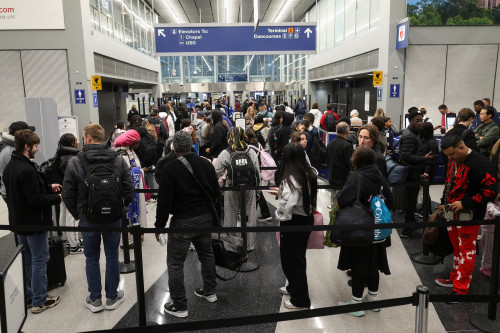
(Justin Vaughn, Editor, Options Trading Report)
After a turbulent month where peaks and valleys ruled stocks, sending the confused market in, up and down, it somewhat ‘righted itself, recovering much of its losses at the end. Eventful news that the economy compressed in the first three months and constant tariff implications, drove indexes downward. Fears of an upcoming recession are also blurring the market. As investors digested the negative news along with many positive earnings reports, the markets gradually turned positive, although not able to come all-the-way back. “If the administration can’t find an off-ramp on the tariffs soon…. then I think we’re going to see a lot more negative GDP numbers dead ahead, and ultimately job losses,” said Mark Zandi, chief economist at Moody’s. He added, “Wednesday’s GDP report probably overstates the economy’s weakness, but the economy’s weak.” Gold has backed off, about 2% now trending near $3,225.00 per troy ounce, after heavy buying the past month by Central Banks and consumer-investors. Discussions with Japan have been fruitful regarding tariff’s, as “a tariff resolution is close at hand,” according to Secretary Lutnick. Over 70 countries have indicated a willingness to discuss and negotiate tariffs with the U.S.
Coming Wednesday, the PCE price report (Personal Consumption Expenditures) will define the prices of goods and services “purchased by consumers in the U.S.” Early expectations are looking to see a three tenths of a point less than February, its lowest number since March 2021. At the end of the week the Bureau of Labor will reveal the Jobs report for April. Present unemployment is 4.2% which economists expect to continue.
Monday’s market was uneventful as stocks swayed up and down all day, yet managed to continue the 5-day upward run, finishing just above flatline except the tech-heavy Nasdaq which shed 0.1%. Stocks climbed Tuesday as investors and traders eased fears that tariffs effects on the economy would not be as severe as initially thought. The indexes all advanced, the Dow Jones Industrial Average gained 0.7%, while the S&P 500 added 0.6% and the Nasdaq Composite rose 0.5%. It marked the sixth day in a row for advancing markets. The 10-year Treasury yield dropped slightly as “safe-haven” assets were not in demand. “It’s a recognition that the worst-case scenario is looking less and less likely,” said Brian Mulberry, client portfolio manager at Zacks Investment Management. Wednesday’s market opened ‘sour’ with the Dow Jones dropping a quick 2%, then slowly rallied to finish up 0.3%, keeping alive the 7 day mini-streak. The S&P 500 closed slightly higher, while the Nasdaq was just below flatline.
Continuing high mortgage rates and declining home inventories have set the Real Estate Market in a downward spin, the worst in 2 years. Stubborn rates, near 7% have not budged as economic conditions have been unfavorable to the market. March existing home sales were off 5.9% in a softening market. Pre-Spring sales for existing homes are continuing soft, dashing hopes for a Spring turn-around, which is normally the busiest time of the year. According to the National Association of Realtors, March sales were the biggest “month over month sales decline since November 2022.” Present mortgage rates according to Freddie Mac are 6.81% for a 30-year mortgage. Lawrence Yun, NAR’s chief economist commented: “I was hoping that we would begin to see some meaningful recovery this year. Well, so far it’s not happening.”
RUMBLINGS ON THE STREET
Freya Beamish, Chief Economist, TS Lombard, Barron’s – “Both the market reaction and an eye toward the 2026 midterm elections will keep the administration on the side of negotiating the… reciprocal part of tariffs away.”
Sandy Villere, Portfolio Manager at Villere & Co., WSJ – “As different countries have these conversations and come to the table, there may be a beginning to the end. I think just seeing a beginning to the end could be enough to calm the markets.”
Keith Lerner, Co-Chief Investment Officer at Trust Advisory Services, WSJ – “The Fed did not provide any assurance that it would support the market by lowering rates. They are in a wait-and-see-mode and companies are in a wait-and-see-mode and neither is great for financial markets.”






